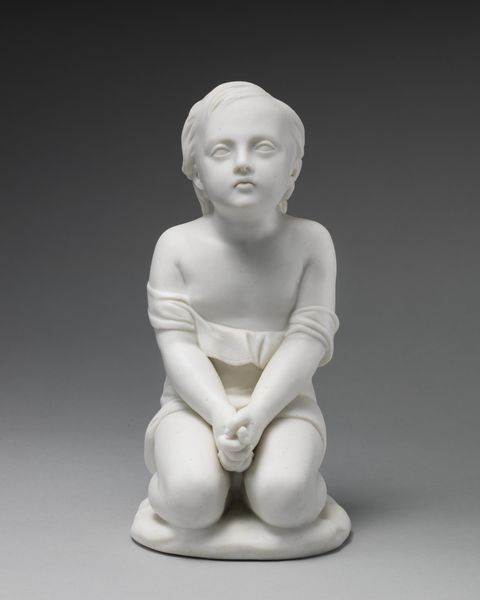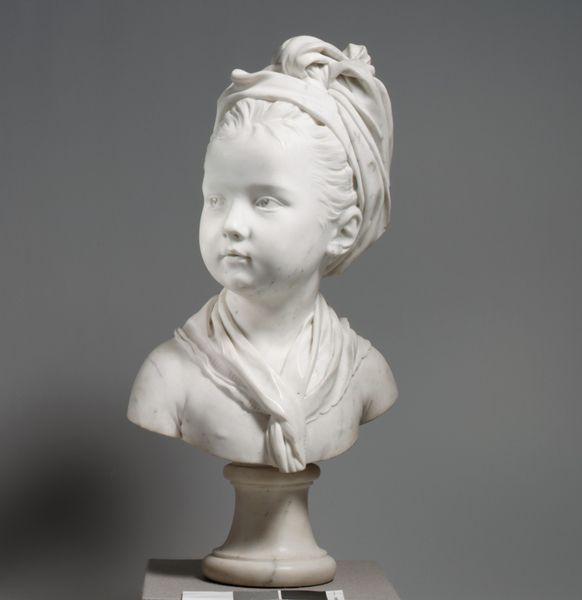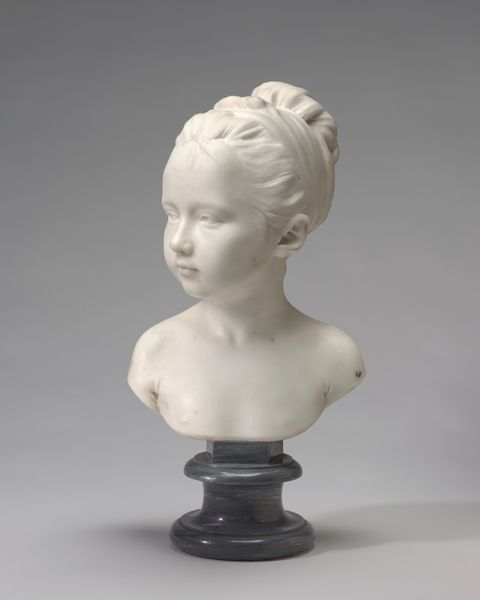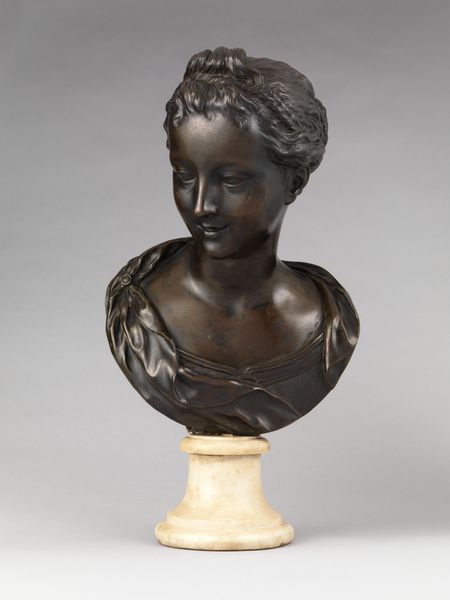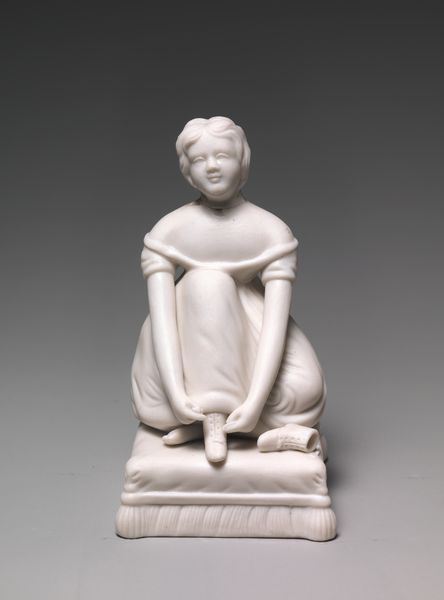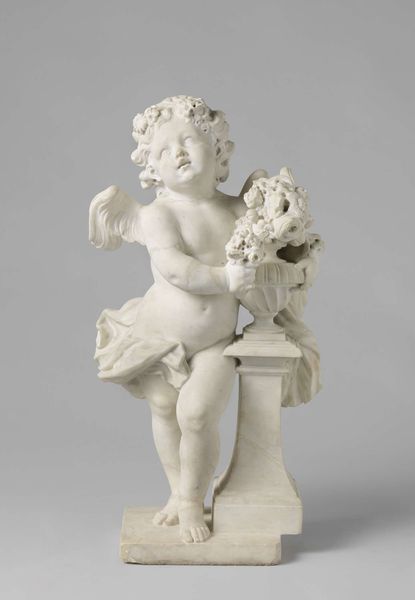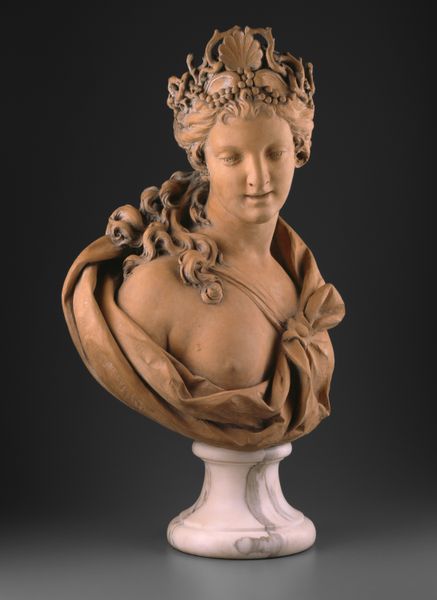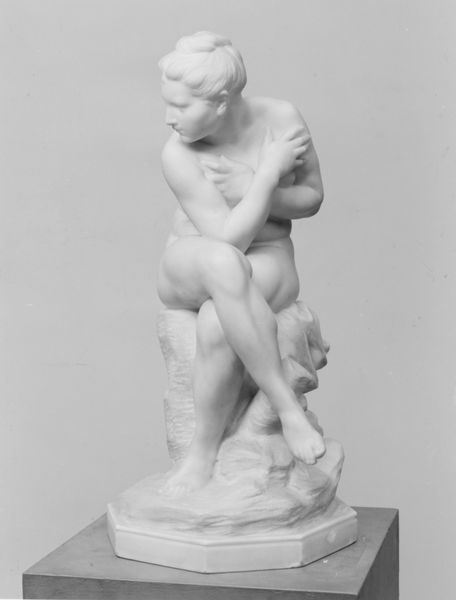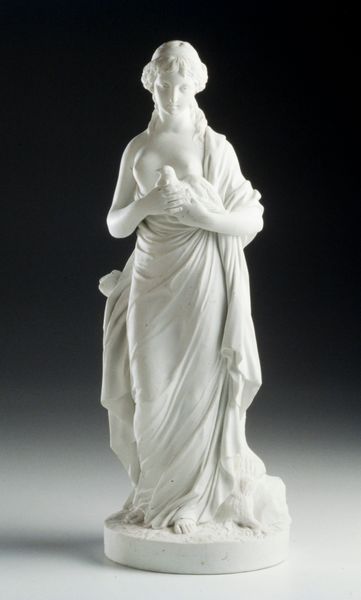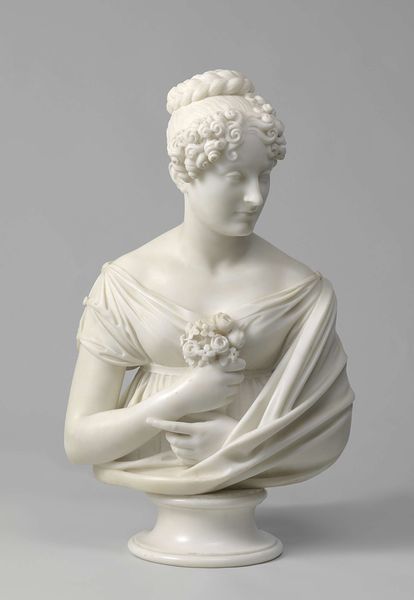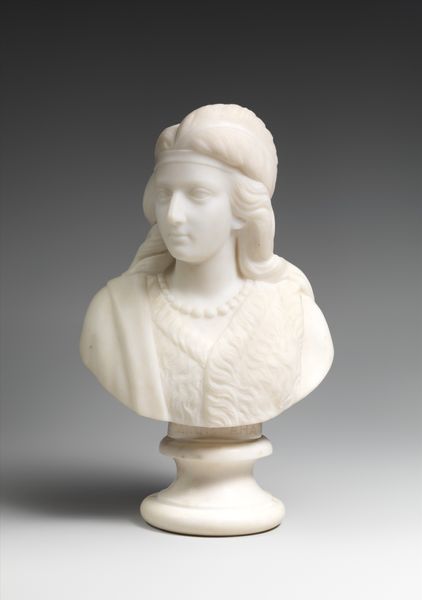
sculpture, marble
#
portrait
#
sculpture
#
academic-art
#
marble
Dimensions: 19 3/4 x 12 1/2 x 7 3/8 in. (50.2 x 31.8 x 18.7 cm)
Copyright: Public Domain
Editor: Here we have Thomas Ball's "La Petite Pensée," sculpted in marble around 1867-1869. It's currently housed at the Metropolitan Museum of Art. I find it very peaceful; the subject’s downward gaze and gentle expression are quite compelling. What formal elements strike you? Curator: Immediately, the meticulous carving. Ball uses the medium to create varied textures, smooth skin against the floral detail. Consider the composition: the bust form itself guides the eye, while the lines created by the drapery and floral garland framing the bust’s base add horizontal stability that contrasts with the slight asymmetry of the face. Editor: Asymmetry? I hadn't noticed. Is that intentional? Curator: Observe closely. The gentle tilt of her head, the subtle difference in the way the light catches each side of her face. This isn't a flaw; it adds depth and realism. Consider how the sculptor contrasts soft, rounded forms with the sharp, defined edges of the floral elements. What purpose might that serve, formally? Editor: Perhaps to emphasize the fleeting nature of youth against something more concrete? Curator: A valid observation! Formally, it adds a textural dynamism. And how do the folds in the drapery interact with the smooth surfaces of the face and neck? What kind of rhythmic structure are we seeing through the strategic interplay of forms? Editor: There's a definite ebb and flow, with the smooth marble acting as a visual rest between the busier textures. This creates visual movement in the static artwork. Thanks. Now, I have a stronger appreciation for its form and the artist's approach. Curator: Indeed. Through line, texture and the balance of shapes, Ball’s work offers a profound formal study in contrasts and delicate asymmetries, beyond just representing sentiment.
Comments
No comments
Be the first to comment and join the conversation on the ultimate creative platform.
